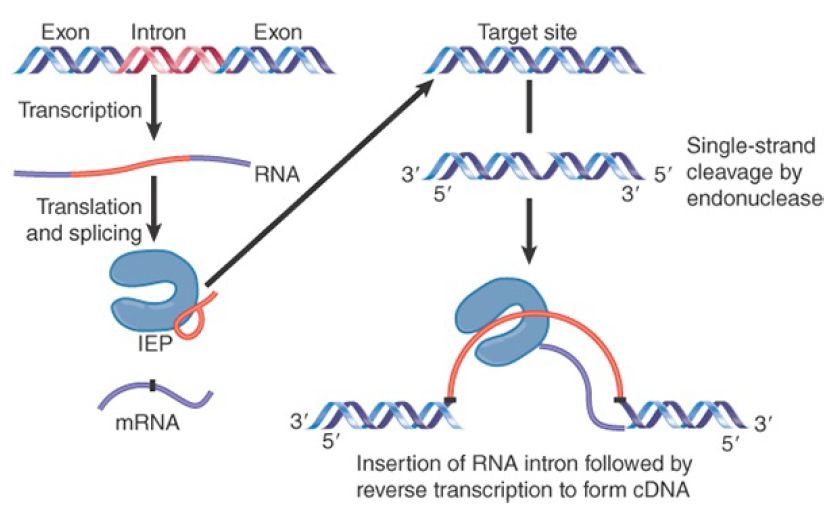
Group II Introns May Encode Multifunction Proteins
 المؤلف:
JOCELYN E. KREBS, ELLIOTT S. GOLDSTEIN and STEPHEN T. KILPATRICK
المؤلف:
JOCELYN E. KREBS, ELLIOTT S. GOLDSTEIN and STEPHEN T. KILPATRICK
 المصدر:
LEWIN’S GENES XII
المصدر:
LEWIN’S GENES XII
 الجزء والصفحة:
الجزء والصفحة:
 21-5-2021
21-5-2021
 2171
2171
Group II Introns May Encode Multifunction Proteins
KEY CONCEPTS
- Group II introns can autosplice in vitro but are usually assisted by protein activities encoded in the intron.
- A single reading frame specifies a protein with reverse transcriptase activity, maturase activity, a DNA-binding motif, and a DNA endonuclease.
- The endonuclease cleaves target DNA to allow insertion of the intron at a new site.
- The reverse transcriptase generates a DNA copy of the inserted RNA intron sequence.
The mechanism for autocatalytic splicing of group II introns is described in the RNA Splicing and Processing chapter. The best characterized mobile group II introns encode a single protein in a region of the intron beyond its catalytic core. This protein is known as the intron-encoded protein (IEP). The typical IEP contains an Nterminal reverse transcriptase activity, a central domain associated with an ancillary activity that assists folding of the intron into its active structure (called the maturase; see the next section, Some Autosplicing Introns Require Maturases), a DNA-binding domain, and a C-terminal endonuclease domain.
In the first step, the maturase activity of the IEP assists the splicing reaction by stabilizing the RNA. The lariat intron produced during splicing remains associated with the IEP. The endonuclease initiates the transposition reaction and plays the same role in homing as its counterpart in a group I intron. The reverse transcriptase generates a DNA copy of the intron that is inserted at the homing site. The endonuclease also cleaves target sites that resemble, but are not identical to, the homing site, leading to insertion of the intron at new locations.
FIGURE 1. illustrates the transposition reaction for a typical group II intron. First, the endonuclease makes a single-strand break in the antisense strand. Cleavage of the sense strand is achieved by a reverse splicing reaction, with the RNA intron inserting itself into the DNA between the DNA exons. This newly inserted RNA intron can now act as a template for the reverse transcriptase. Almost all group II introns have a reverse transcriptase activity that is specific for the intron. The reverse transcriptase generates a DNA copy of the intron, with the end result being the insertion of the intron into the target site as a duplex DNA.

FIGURE 21.10 Reverse transcriptase/endonuclease encoded by an intron allows a copy of the RNA to be inserted into a target site.
IEP represents the intron-encoded protein.
 الاكثر قراءة في مواضيع عامة في الاحياء الجزيئي
الاكثر قراءة في مواضيع عامة في الاحياء الجزيئي
 اخر الاخبار
اخر الاخبار
اخبار العتبة العباسية المقدسة


